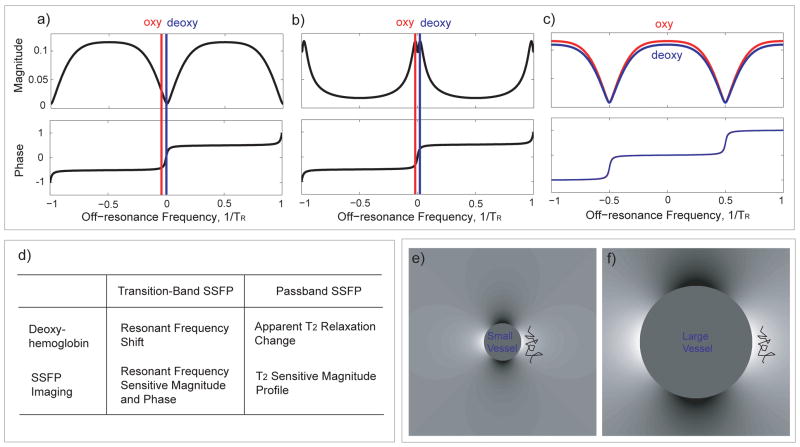Figure 1.
b-SSFP fMRI methods. The two transition-band b-SSFP fMRI methods (a, b) depend on the sharp magnitude and phase transition of the b-SSFP off-resonance response while the passband b-SSFP fMRI method (c) utilizes the flat portion of the b-SSFP off-resonance profile. Differences between transition-band and passband b-SSFP properties are summarized in (d). (e) The contrast is expected to be maximized near small vessels where water molecules experience rapid off-resonance frequency change during each TR. (f) For larger vessels, water diffuses in a relatively uniform field during each TR. The wiggly lines in (e) and (f) represent the typical water diffusion distances.

